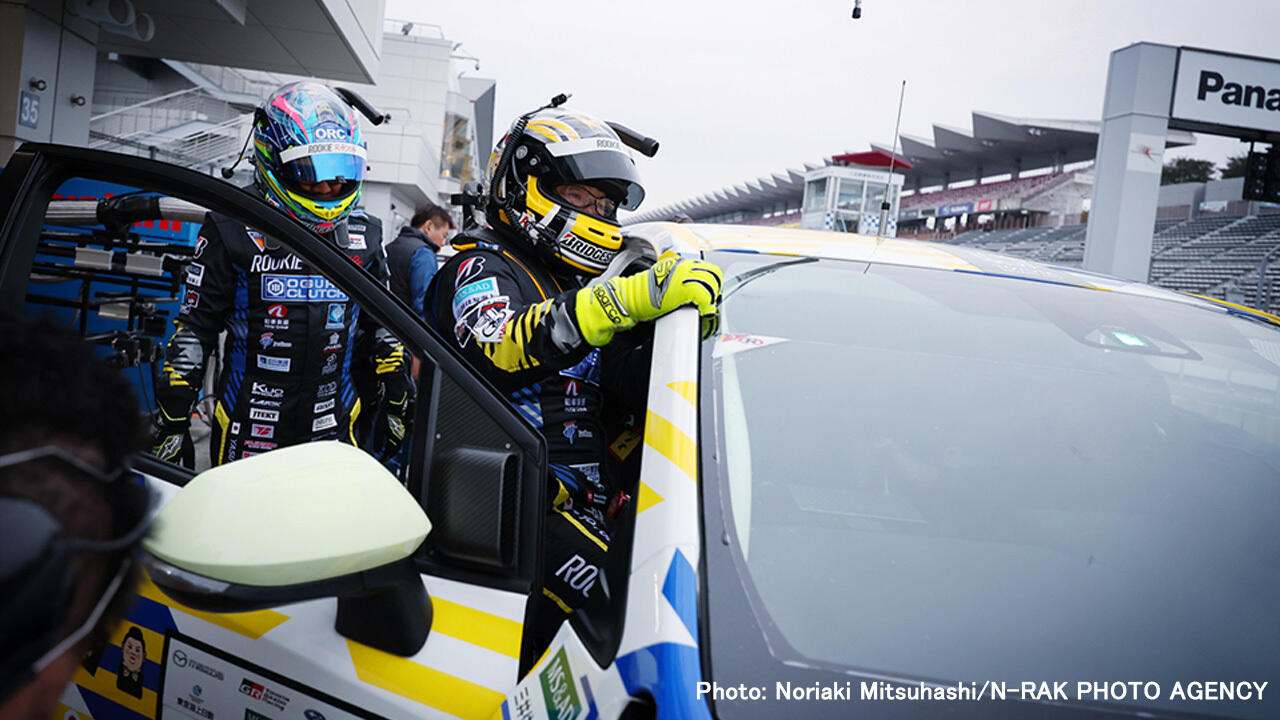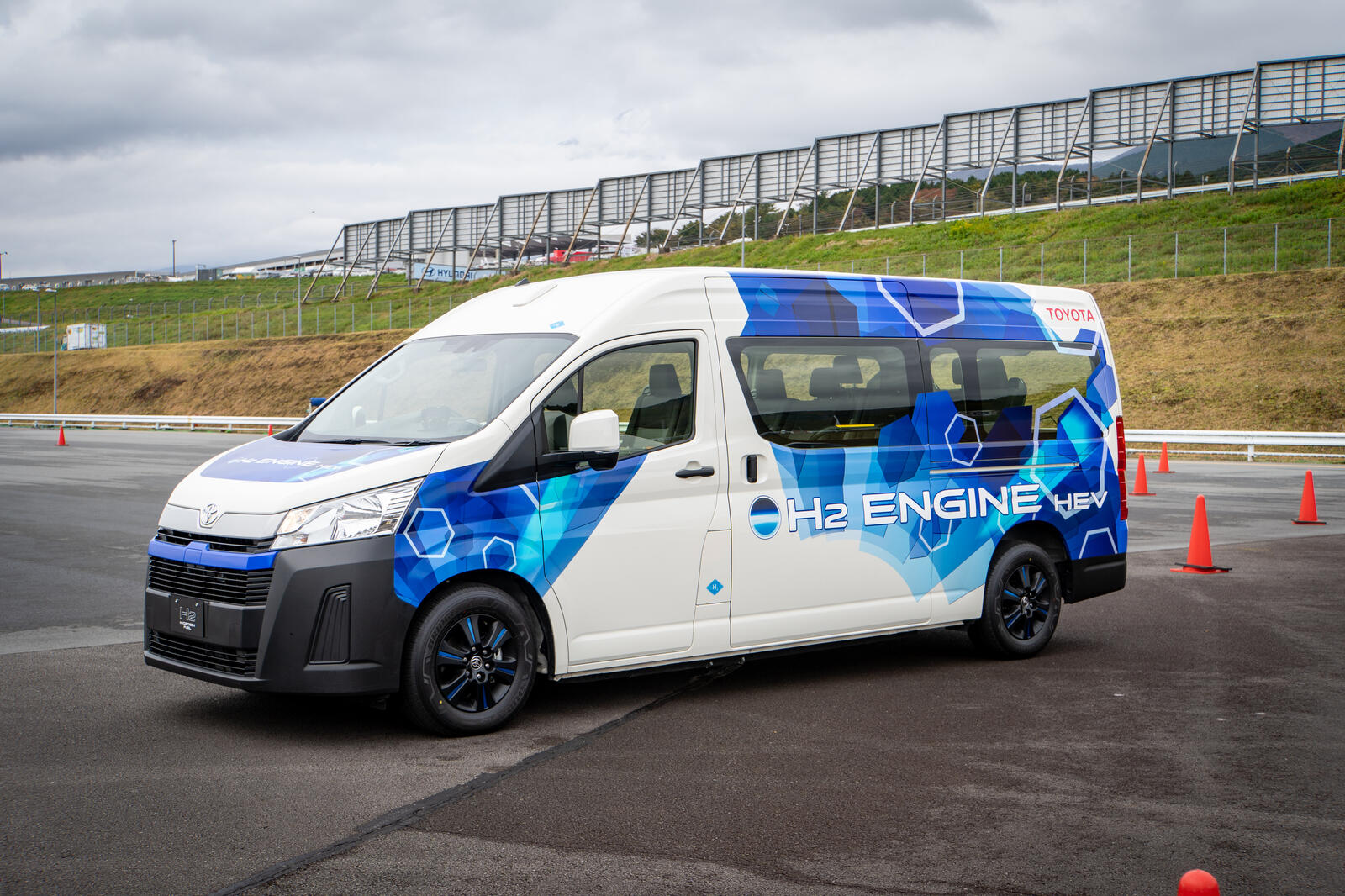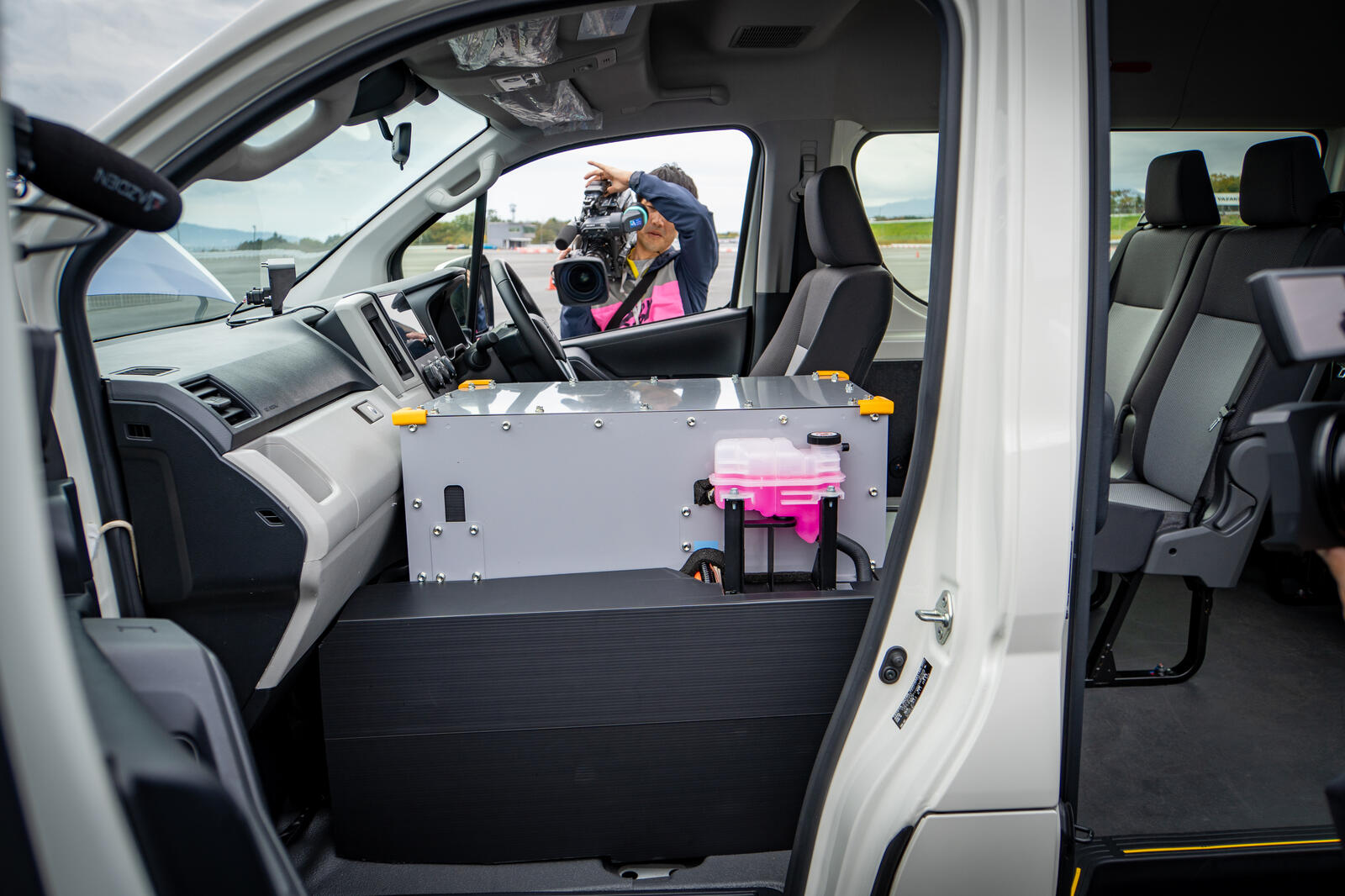
Three years after the hydrogen-powered Corolla began racing in the Super Taikyu Series, the 2024 season's final round featured announcements of new initiatives toward creating a hydrogen society.
Hydrogen technology trials in progress
Hydrogen technology trials are currently underway in various fields, including hydrogen storage modules, light- and heavy-duty fuel cell (FC) trucks, hydrogen-powered ships, FC Bus Rapid Transit (BRT) systems, FC garbage trucks and ambulances, and using hydrogen to generate electricity.
Another new technological advancement was showcased at the Super Taikyu final round: the world’s first hydrogen-engine hybrid.

The hydrogen-fueled HiAce was unveiled at the last race of the 2023 Super Taikyu season. Powered by a turbocharged V6 engine that burns hydrogen, this car has undergone a year-long trial in Australia.
Local customers gave the car their approval, finding that it was “very easy to use,” ran with “little vibration,” and overall, “acceptable”.
At the same time, some raised concerns about refueling, given the car’s short range and the current lack of hydrogen stations.
As a solution to this problem, Toyota developed the recently unveiled hydrogen-engine hybrid HiAce.
Combining a hydrogen engine with Toyota’s hybrid system boosted cruising range by 25% to 250km, while the motor’s power also improved acceleration by 25%.
The hydrogen-engine hybrid HiAce on display was a prototype developed for testing within a short timeframe. For now, the battery has been mounted in the passenger seat, but the ongoing development will include various improvements aimed at creating a more user-friendly commercial vehicle.

One challenge will be repositioning the battery pack and making it smaller to avoid interfering with the passenger seat.
What’s more, in addition to being a hybrid, this car also borrows catalyst technologies honed for diesel engines. These curb the trace amounts of nitrogen oxide (NOx) emitted by the hydrogen engine, ensuring compliance with regulations.
Vice President Nakajima explained the reasons for continuing to trial the HiAce in Australia.
Vice President Nakajima
Being right-hand-drive, Australia is a country that is highly compatible with Japanese cars, and has abundant access to hydrogen.
We’re conducting trials under the working conditions of commercial vehicles in Australia, where leaving the city soon brings you into contact with unpaved roads, and proximity to desert areas means you encounter a lot of dust.
This allows us to check how such tough environments, not found in Japan, impact the hydrogen engine. I think Australia’s demanding conditions make it a very good place to test and hone new technologies.
Improving hydrogen carrying capacity
Other technologies for further extending the vehicle’s range include varied hydrogen tank shapes, as presented at the 2023 Technical Workshop, and liquid fuel, as used by the hydrogen-powered Corolla in Super Taikyu.
Vice President Nakajima
To distribute pressure evenly, the current tanks are circular, which gives them poor volume efficiency—with cylinders, you lose the four corners.
And because they are circular, these tanks have a set width. If we have room to play with, it may be more efficient to make them elliptical or to arrange many small tanks together.
To extend cruising range further, we need to increase the amount of hydrogen that can be carried. That’s a big challenge.
The technology is very complex, but we are doing everything we can to make our gaseous fuel tanks more volumetrically efficient.
Another potential approach is liquid hydrogen, which is more volume-efficient than gas. Our hydrogen engine Corolla is currently running on liquid hydrogen in the Super Taikyu, and we are seriously exploring this as the next step.
Since liquid hydrogen must be stored at extremely low temperatures, the tanks are constructed like thermos flasks.
Although the fuel is at low pressure, tank walls must be made thicker to improve isolation, which limits the amount of hydrogen they can hold.
We foresee the use of liquid hydrogen starting from large trucks, but reshaping tanks and their thermos-like structure will present the next big challenge.
Getting trucks, which consume large amounts of fuel, to use hydrogen would ensure steady operations for refueling stations.
When that happens, those hydrogen stations will be available for use by our passenger cars. To begin, we will do everything possible from the vehicle side to establish conditions that spur steady growth in social infrastructure.
At the same time, we have also developed cartridges for carrying hydrogen. This means that, in addition to filling cars at refueling stations, the hydrogen itself can also be moved around—for example by loading the cartridges onto ships—allowing the fuel to be transported closer to users from hydrogen station hubs.
Another avenue is generating electricity from hydrogen, which can be stored. Unfortunately, much renewable energy is still being wasted.
This renewable energy could instead be turned into hydrogen, which is then transported for use in another location.
To facilitate this, we are also working on producing hydrogen through electrolysis and using hydrogen to generate electricity.
While the scale remains small, I regard hydrogen as the ultimate energy source for energy-poor Japan. Though it may take time, with your cooperation we intend to grit our teeth and continue forging ahead, step by step.

